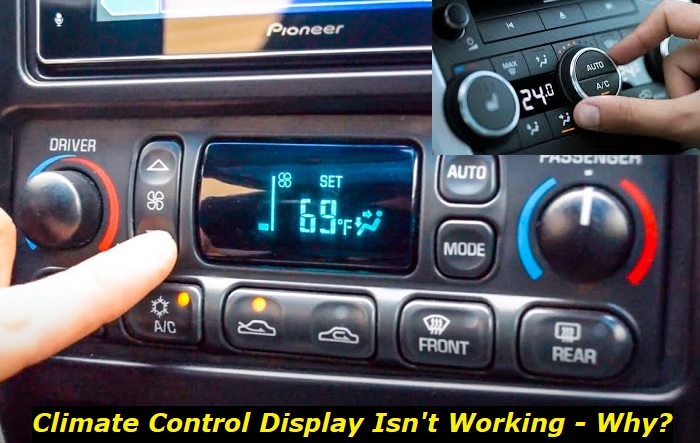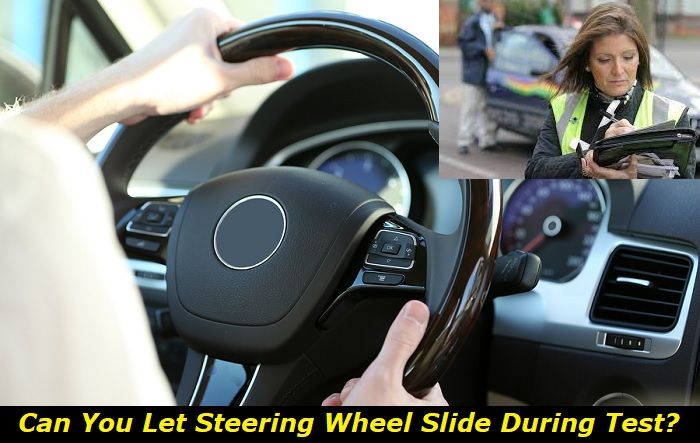The climate control system is an integral part of any vehicle. It's responsible for maintaining the temperature inside your car's cabin. This helps make any ride comfortable for you and your passengers.
Screen problems highlights
- Reasons:screen death, connections, physical damage, high voltage, glitch
- Quick fix:reset the system, check power, check fuse, check wiring
- Price forrepair:$0 - $1,000
- Time forrepair:0.5 - 3 hours
- Howcommon:quite common
- DIYrepair:possible

What Are The Common Reasons Why The Climate Control Display Is Not Working?
Modern car models now have a myriad of different systems and applications installed into them. These changes help make driving far easier and provide more comfort while on the road.
However, they don't come without their disadvantages. One thing that a lot of these systems have in common is that they're hard to troubleshoot. This also applies to a car's climate control display.
Due to the complexity of a car's electrical systems, there are many factors that you need to take into consideration. If you don't feel confident diagnosing what problems plague your car's climate control display, bring it to your nearest auto shop. But if you want to try and figure out these problems yourself, here are the most common reasons why your car's climate control display is acting up.
1) Faulty Control Module
Whether your car has an automatic or manual climate control system, it still has a display that you can access inside your car. This display usually contains a series of buttons, dials, and screens that allow you to adjust and set the temperature inside your car.
With regular use, it's not uncommon for this component to become unresponsive at times. Constant pressure on the screens and buttons will result in a myriad of defects as the years go by.
But those are not the only forms a faulty control module will take. Oftentimes, it will stop working due to a fault within its internal components. Or, it will start acting up, like being unable to maintain a certain temperature.
The only way to repair such an issue is to replace the module with a new one. If you wish to prevent this from happening, take care when using the climate control display.
2) Failing Sensors
If your car's control module is relatively new or there are no obvious signs of wear and damage, then a failing sensor is to blame. To check if this is the case, use an OBD2 scanner. When you receive a faulty reading, that usually means that one or more of your car's climate control sensors are not working.
Every car's climate control system has at least two sensors. Each sensor falls into one of two categories:
- Ambient Temperature Sensor
- Internal Temperature Sensor
The ambient temperature sensor is responsible for detecting the temperature outside the car. On the other hand, the internal temperature sensor is responsible for the interior cabin. Together, these two work in tandem to control and modulate the strength and coolness of the air that comes out of the vents.
On higher-end vehicles, they use more than just two sensors. These additional sensors help obtain even more information, like how much sunlight is passing through the windows, to provide the driver and the passengers with a more comfortable experience.
Unfortunately, it drastically impacts the efficiency of your car's climate control system if one or more of them starts to fail. But it's relatively easy to spot and fix since this will trigger a fault code within your car's internal system upon scanning.
3) Broken Blend Motors
A car's climate control system doesn't just consist of a module and sensors. It also has specialized motors that are responsible for controlling the temperature at which air comes out of the events.
Often called blend motors, they function by blending warm and cool air to help achieve the desired temperature inside your car's cabin. They work in tandem with the control module, allowing for correct positioning so that they can blend air and achieve the desired temperature of the airflow inside the car cabin.
So if one of these motors starts failing, they're unable to communicate properly with the climate control module. What ends up happening is that the airflow becomes either too warm or too cold, depending on the setting. Another sign of a broken motor is if you start hearing weird noises coming from the vents.
To repair this, you will have to bring your car to a mechanic. From there, they will check what's wrong with the motor and tell you whether or not it's still repairable. If not, you will most likely have to replace it with a new one.
4) Blown Fuse
If your car is not experiencing any of the above issues, then a blown fuse or exposed wiring is at fault. This is quite tricky to spot considering how complex the modern car's electrical systems have become.
To check, you will need to use a multimeter. This will help you determine if your car indeed has a wiring issue and its location. Another tool you can use to diagnose the problem is a power probe.
However, if you're not comfortable handling your car's wiring, seek the help of a mechanic. They can help diagnose the issue for you and advise you on the appropriate measures to take.
5) Low Battery
Another issue that often comes up when mentioning a faulty climate control display is the car battery. More often than not, your battery doesn't have enough juice to power your car's electrical systems.
Thankfully, this is the easiest to fix among the issues here. All you need to do is either recharge your car battery or replace it with a new one.
This is also a good time to check the state of your car battery. Make sure that the terminals are clean and that there are no visible cracks on the surface. Tighten up the connections as well to ensure proper electrical flow.
Remember, your car's electrical systems rely heavily on the battery. So if the air coming out of the vents starts weakening or the light on the display module starts dimming, you need to check the car battery.
How To Repair a Faulty Climate Control Display?
As mentioned earlier, a faulty climate control display has many factors that cause this to happen. However, that doesn't mean there's no easy way to fix it generally and in the comfort of your home.
The most common issue is that there's an electrical fault within the system. To fix this, you just need to reset your car's climate control system. Think of it as rebooting your computer at home.
First, you need to park your car somewhere safe and turn off the engine. Then, unlock the hood of your car and lift it. From there, locate the fuse box that's near the car battery.
Generally, it looks like a black plastic box. If you can't find it, you will need to consult your car's manual.
Then, open the fuse box and carefully remove the HVAC fuse. Normally, there are instructions underneath the lid that tell you which one is the HVAC fuse. If there's none, you will have to consult the car manual again, or you can look it up online.
After removing the fuse, inspect it for any damages or corrosion. If there are, you will have to replace the fuse with a new one.
Once you're sure that there's nothing wrong with the HVAC fuse, gently place it back inside after waiting for at least ten seconds after pulling it out earlier. Afterward, you put everything back in place and start the engine.
Do not touch any of the controls on the climate control module for at least forty seconds upon starting the engine. That's because the system is currently making the necessary calibrations, and any inputs can interrupt that process.
Usually, doing this is enough to resolve the issue plaguing your car's climate control display. But if it persists, you will need the help of a professional.
Conclusion
When you notice the fluctuating temperature inside the car's cabin, it's a telltale sign that there's something wrong with the control climate display. As such, you need to make a thorough inspection of the possible causes of this. And if you can't pinpoint the issue, bring your car to an auto shop and have a professional mechanic take a look.
But before that, you can also attempt to fix the issue yourself at home. All you have to do is follow the instructions mentioned earlier on how to reset the climate control display. This is enough to resolve most issues. However, if the issue keeps occurring or resetting the climate control display doesn't help, going to a mechanic is your only solution.
About the authors
The CarAraC research team is composed of seasoned auto mechanics and automotive industry professionals, including individuals with advanced degrees and certifications in their field. Our team members boast prestigious credentials, reflecting their extensive knowledge and skills. These qualifications include: IMI: Institute of the Motor Industry, ASE-Certified Master Automobile Technicians; Coventry University, Graduate of MA in Automotive Journalism; Politecnico di Torino, Italy, MS Automotive Engineering; Ss. Cyril and Methodius University in Skopje, Mechanical University in Skopje; TOC Automotive College; DHA Suffa University, Department of Mechanical Engineering






Add comment